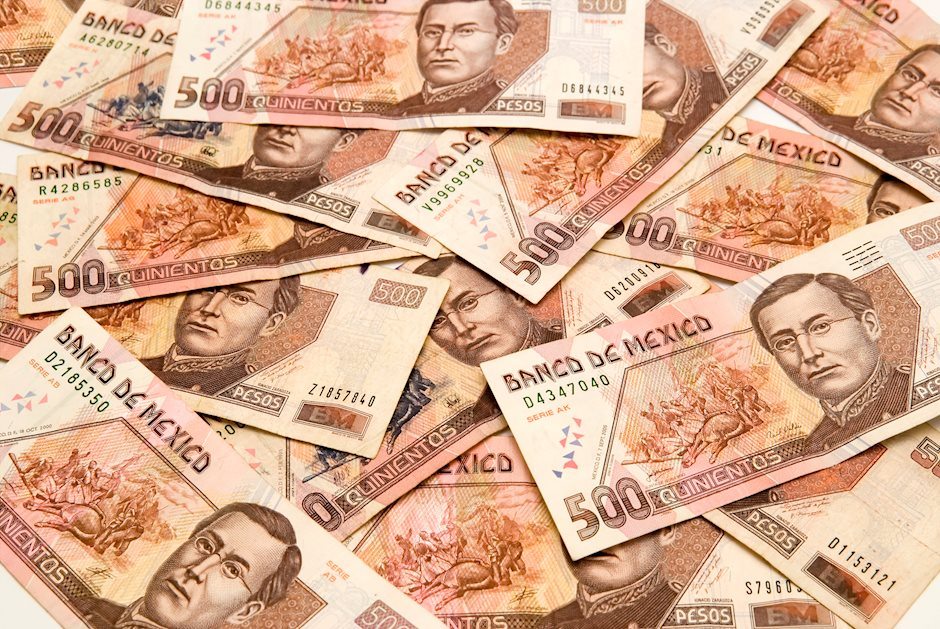USD/MXN edges lower to near 18.00 due to risk-on sentiment
- USD/MXN loses ground due to increased risk sentiment amid dovish Fed.
- CME Group’s FedWatch Tool suggests a 91.7% probability of a 25-basis point rate cut in September.
- Trump claims that “China and Mexico have taken 68% of our automotive industry, but we are going to get it back.”

USD/MXN breaks its three-day winning streak, trading around 18.00 during the European hours on Monday. The dovish sentiment surrounding the Federal Reserve's policy stance puts pressure on the US Dollar (USD) and undermines the USD/MXN pair. According to CME Group’s FedWatch Tool, the markets show a 91.7% probability of a 25-basis point rate cut at the September Fed meeting, up from 90.3% a week earlier.
The US Dollar Index (DXY), which measures the value of the US Dollar (USD) against six other major currencies, edges lower after two days of gains, trading around 104.20, which could be attributed to the decline in the US Treasury yields. 2-year and 10-year yields on US Treasury bonds stand at 4.51% and 4.21%, respectively.
US President Joe Biden abandoned his re-election bid on Sunday under growing pressure from his fellow Democrats and endorsed Vice President Kamala Harris as the party's candidate to face Republican Donald Trump in the November election, according to Reuters.
On the MXN front, the IMF has revised Mexico's 2024 GDP growth outlook downward to 2.2% from 2.4%, citing an economic slowdown, particularly in manufacturing due to reduced US economic activity. This has pressured the Bank of Mexico (Banxico) to adopt a more accommodative stance, according to Mexico Business News.
Additionally, former president Donald Trump's comments have put Mexico in the spotlight. Trump stated that he would end illegal immigration “by closing the border and completing the wall,” and claimed, “China and Mexico have taken 68% of our automotive industry, but we are going to get it back.” These remarks, reported by Bloomberg News, threaten to discourage companies from relocating to Mexico, which could weaken the Mexican Peso (MXN).
Mexican Peso FAQs
The Mexican Peso (MXN) is the most traded currency among its Latin American peers. Its value is broadly determined by the performance of the Mexican economy, the country’s central bank’s policy, the amount of foreign investment in the country and even the levels of remittances sent by Mexicans who live abroad, particularly in the United States. Geopolitical trends can also move MXN: for example, the process of nearshoring – or the decision by some firms to relocate manufacturing capacity and supply chains closer to their home countries – is also seen as a catalyst for the Mexican currency as the country is considered a key manufacturing hub in the American continent. Another catalyst for MXN is Oil prices as Mexico is a key exporter of the commodity.
The main objective of Mexico’s central bank, also known as Banxico, is to maintain inflation at low and stable levels (at or close to its target of 3%, the midpoint in a tolerance band of between 2% and 4%). To this end, the bank sets an appropriate level of interest rates. When inflation is too high, Banxico will attempt to tame it by raising interest rates, making it more expensive for households and businesses to borrow money, thus cooling demand and the overall economy. Higher interest rates are generally positive for the Mexican Peso (MXN) as they lead to higher yields, making the country a more attractive place for investors. On the contrary, lower interest rates tend to weaken MXN.
Macroeconomic data releases are key to assess the state of the economy and can have an impact on the Mexican Peso (MXN) valuation. A strong Mexican economy, based on high economic growth, low unemployment and high confidence is good for MXN. Not only does it attract more foreign investment but it may encourage the Bank of Mexico (Banxico) to increase interest rates, particularly if this strength comes together with elevated inflation. However, if economic data is weak, MXN is likely to depreciate.
As an emerging-market currency, the Mexican Peso (MXN) tends to strive during risk-on periods, or when investors perceive that broader market risks are low and thus are eager to engage with investments that carry a higher risk. Conversely, MXN tends to weaken at times of market turbulence or economic uncertainty as investors tend to sell higher-risk assets and flee to the more-stable safe havens.
Author

Akhtar Faruqui
FXStreet
Akhtar Faruqui is a Forex Analyst based in New Delhi, India. With a keen eye for market trends and a passion for dissecting complex financial dynamics, he is dedicated to delivering accurate and insightful Forex news and analysis.

















